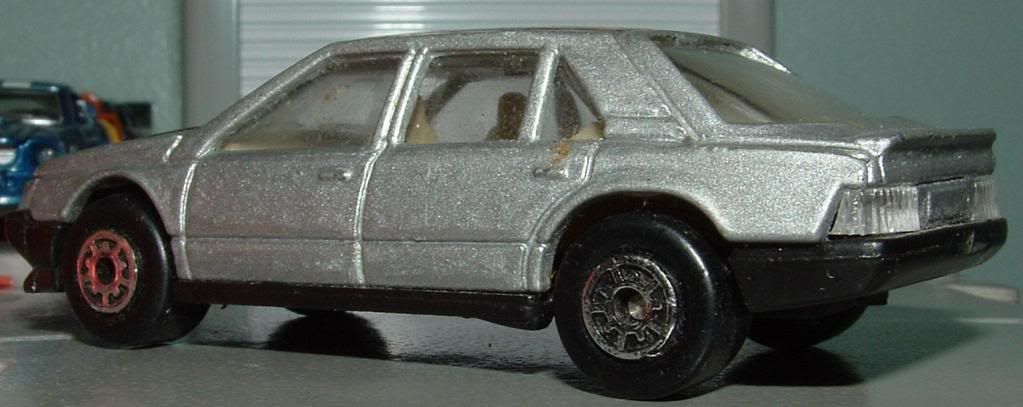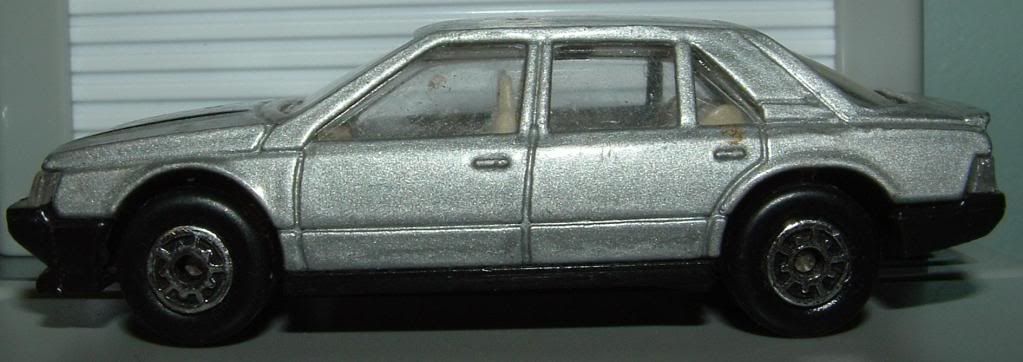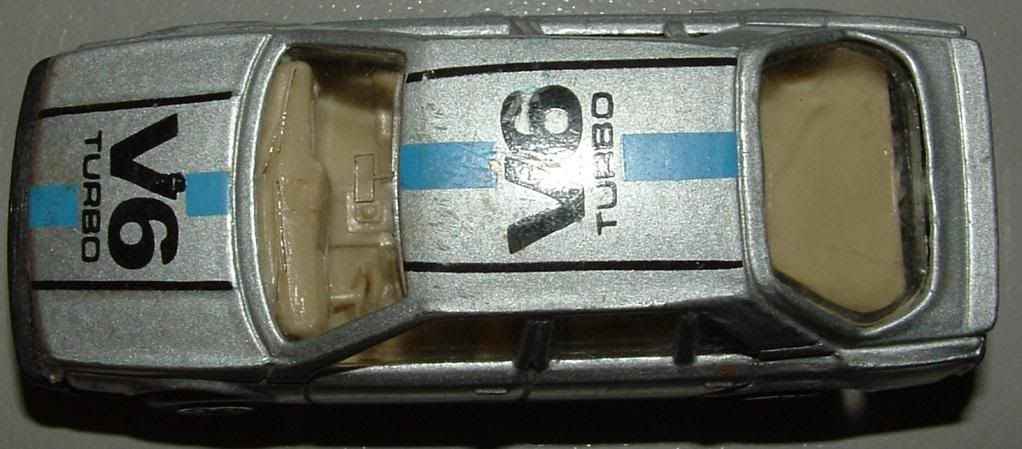
A blog focusing on 1/64 diecast from such popular brands as Hot Wheels, Matchbox, Johnny Lightning, M2 Machines, GreenLight, Tomica, Yat Ming, Majorette, MotorMax, Siku, Corgi, Guisval, Playart, Ertl, Zylmex, Racing Champions, & many more. Swifty's Garage features a daily Car Of The Day and news updates from your favorite brands!
Wednesday, October 12, 2011
Car Of The Day: October 12, 2011
Today's car of the day is Maisto's 1987 Renault 25 V6 Turbo.
The Renault 25 is an executive car produced by the French automaker Renault from 1983 to 1992. During its time, the 25 was Renault's flagship, the most expensive, prestigious, and largest vehicle in the company's line-up. It placed second in the 1985 European Car of the Year contest. All 25s were built in Sandouville, near Le Havre, France.
For more information and pictures of the real car please visit: Renault 25
Another recent find from Hershey, I think this one may need a bit of a bath. I wish I had seen the dirt before taking pics but the macro mode really highlights it.
Introduced in late 1983 for a March 1984 start of sales, the Renault 25 was a large step forward in nearly every aspect from the Renault 20 / Renault 30 range it was replacing. Its five-door liftback body was penned by designers Gaston Juchet and Robert Opron of Citroën SM fame, and the unconventional style (the wraparound rear window was its most famous feature) was aimed at giving the car a notchback look in order to overcome customer preference outside France for formal sedans in the segment.
The 25 was one of the first cars designed from the start for aerodynamic efficiency; its drag coefficient (Cd) was 0.31, a key factor in improving fuel economy. The TS model briefly held the unofficial title of "world's most aerodynamic mass-production car" with a Cd of 0.28, and at its launch the 25 was easily the best in its class for fuel economy.
All Renault 25 models were front-wheel drive, with four cylinder (2-litre and 2.2-litre petrol injection or 2.1 litre diesel) and six-cylinder (2849cc and 2458cc turbo injection) engines mounted longitudinally forward of the front axle. The 25's performance was above average for its class, with the V6 Turbo specification a match for the Mercedes-Benz E-Class and BMW 5 Series.
The 25 was praised for its ride comfort and spirited handling (despite slight understeer, and torque steer on V6 Turbo models). A newly designed manual transmission drew unanimous praise for its precision and smoothness (although the detente spring on 5th gear could cause mis-selection of 3rd gear), and though the futuristic interior designed by Italian designer Marcello Gandini (of Lamborghini fame) was controversial, the 25 was highly regarded for its quiet, spacious and well-lit passenger compartment.
Equipment levels were high and set new standards for French cars, the 25 including among other features, an express-up and down feature on the driver's power window, voice alerts (covering items such as improperly shut doors/bonnet/boot - oil pressure, engine temperature/charging circuit and blown bulbs), and one of the world's first remote stereo controls, mounted to the right of the steering column (controlling volume +/-, station search, station select (jog wheel) in radio mode & Volume +/-, mute and track advance (if supported)). For the first time since World War II, Renault had a realistic chance of breaking into the full-size market segment outside of France.
Subscribe to:
Post Comments (Atom)






No comments:
Post a Comment